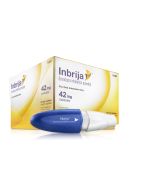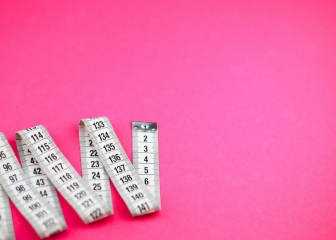New (and Upcoming) Parkinson’s Disease Treatments in 2024
Last updated: 05 November 2024

You can legally access new medicines, even if they are not approved in your country.
Learn howWhat is Parkinson’s disease?
Parkinson’s disease (PD) is a progressive brain disorder that causes shaking and muscle stiffness, and slows movement. It develops when neurons (brain cells) in a particular part of the brain stop working properly and are lost over time. These neurons produce an important chemical called dopamine. Dopamine is used by the brain to send messages across brain areas to help control movement. Eventually, the brain cannot make enough dopamine to control the movement properly.1, 2
Is there a cure for Parkinson's disease?
There is currently no cure for Parkinson’s disease. However, there are multiple treatments to help patients manage symptoms and increase "on" time.
What are the latest approved treatments for Parkinson’s disease?
Several medicines have been approved for the treatment of Parkinson’s disease in the last few years. Some of them are already.available in Europe and the Netherlands. Others are yet to be approved locally. Here are some of the newest medicines for Parkinson’s disease:
New Parkinson's disease treatments available in the Netherlands
Vyalev/Produodopa (foslevodopa/foscarbidopa)
Vyalev is approved in the USA and available as Produodopa in Europe (including the Netherlands). This therapy represents a critical option for patients seeking around-the-clock symptom management.
Inbrija (levodopa)
Inbrija (levodopa inhalation powder) is a treatment designed for patients with Parkinson's disease to address "off" episodes. "Off" episodes are periods when symptoms are not well controlled by regular oral medicines. Administered via a portable inhaler, Inbrija delivers a quick-acting formulation of levodopa, allowing for rapid relief of motor symptoms.
Clinical studies have shown that Inbrija can significantly increase "on" time without troublesome dyskinesia. In this way, it may improve the overall quality of life for patients.
New Parkinson's disease treatments not yet available in the Netherlands
Nourianz/Nouriast (istradefylline)
Nourianz/Nouriast (istradefylline) is a medication used for the treatment of "off” episodes in patients with Parkinson’s disease. The “off” episodes in Parkinson’s disease lead to an increase in Parkinson’s disease symptoms, such as tremor and difficulty walking, and it results from low levels of dopamine between doses of carbidopa/levodopa, and they can be unpredictable and appear more frequently over time.
Nourianz/Nouriast/Nouryant (istradefylline) is approved by the Food and Drug Administration (FDA) and by the Pharmaceuticals and Medical Devices Agency (PMDA) in Japan.
However, the EMA rejected its marketing authorization application in 2021. Nouryant was rejected due to inconsistent study results. Only four out of eight studies demonstrated a reduction in 'off' time; there was no observed dose-response effect, and no efficacy shown in trials involving EU patients receiving optimal treatment for Parkinson’s disease. As a result, the medicine is not available in the EU. If, however, your treating doctor recommends it, there is a way to access it, via the Named Patient Import regulation.
Crexont (carbidopa and levodopa)
Crexont, approved by the FDA in August 2024, is an extended-release treatment for Parkinson's disease. It combines carbidopa and levodopa in a single capsule. This novel formulation includes both extended-release beads for a gradual release of levodopa and immediate-release granules of carbidopa and levodopa. In this way, it allows for quick onset and prolonged symptom control. According to the manufacturer, Crexont provides a longer “Good On” time with fewer doses compared to immediate-release treatments. Thus, it reduces the dosing frequency required by many Parkinson’s patients.
Taken twice daily, Crexont offers a convenient oral option for managing symptoms. In contrast to Vyalev’s infusion-based delivery, Crexont’s capsule form may suit patients who prefer an extended-release oral solution.
Numient (levodopa/carbidopa)
Numient (also known as Rytary in the U.S.) is an extended-release formulation of carbidopa and levodopa used to treat Parkinson's disease. It lost its authorization in the European Union in 2022 when the marketing authorization holder, Acorda Therapeutics, voluntarily withdrew its application. This decision was not due to safety or efficacy issues but because Acorda opted to discontinue its EU efforts for commercial reasons.
European (and Dutch) patients who want to continue or start a treatment with Numient can still do so, via the Named Patient regulation. Get in touch for more information.
What are upcoming treatments for Parkinson's disease?
There are currently several treatments in development. Some are addressing symptoms and others are aimed at modifying the course of the disease. Below are some examples.
Disease-modifying Parkinson's treatments in development
- BIIB054 and RO7046015: These antibodies are both focused on preventing aggregated alpha-synuclein from spreading. Both are currently in Phase 2 clinical trials.
- GDNF and CDNF: Both are trophic factors aimed at protecting dopamine cells. The two medicines are in Phase 2 clinical trials.
- Inosine: A nutritional supplement that increases antioxidant levels. Some studies show it may have a protective effect or slow the progression of Parkinson's disease. Inosine is currently in a Phase 3 clinical trial.
- Isradipine: This medicine, originally intended to treat high blood pressure, may help protect brain cells. Isradipine is currently in a Phase 3 clinical trial.
Experimental Parkinson's treatments addressing motor symptoms
- PXT002331 (foliglurax): This medicine works on the glutamate and other brain chemical systems to reduce dyskinesia and motor symptoms. Foliglurax is currently in a Phase 2 clinical trial.
- ADX48621-201 (dipraglurant): This medicine blocks the effects of glutamate, which may decrease dyskinesia. Currently in Phase 2 clinical trials.
For a full list of experimental treatments for Parkinson’s disease, visit the Michael J Fox organisation website (referenced below).
How to access a Parkinson’s treatment before it's available in the Netherlands
Novel medicines for Parkinson's disease tend to be first approved in the USA. Patients in Europe, the Netherlands, and the rest of the world have to wait for years before these medicines are available to them. However, if there is a medicine your treating doctor believes could benefit you, you can get it right away, before it's approved in the Netherlands. This is possible based on the Named Patient Import regulation. If you're interested in more information on this, get in touch with Everyone.org's expert team.







